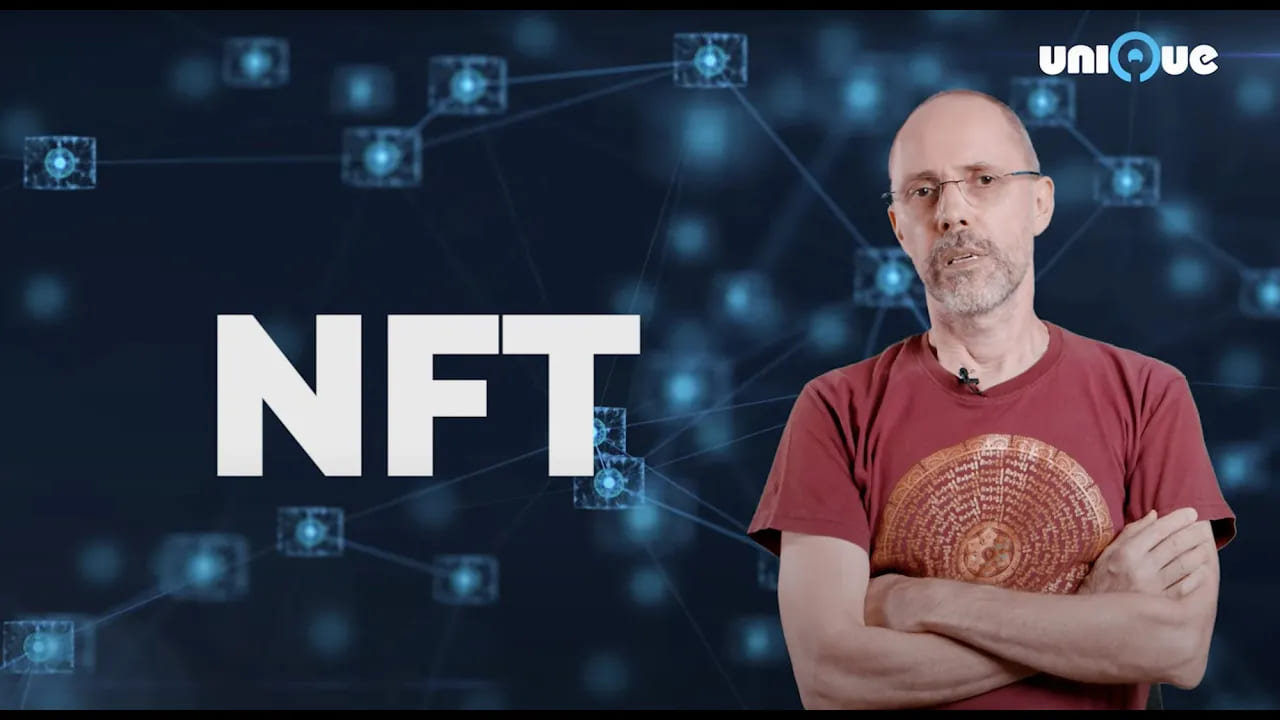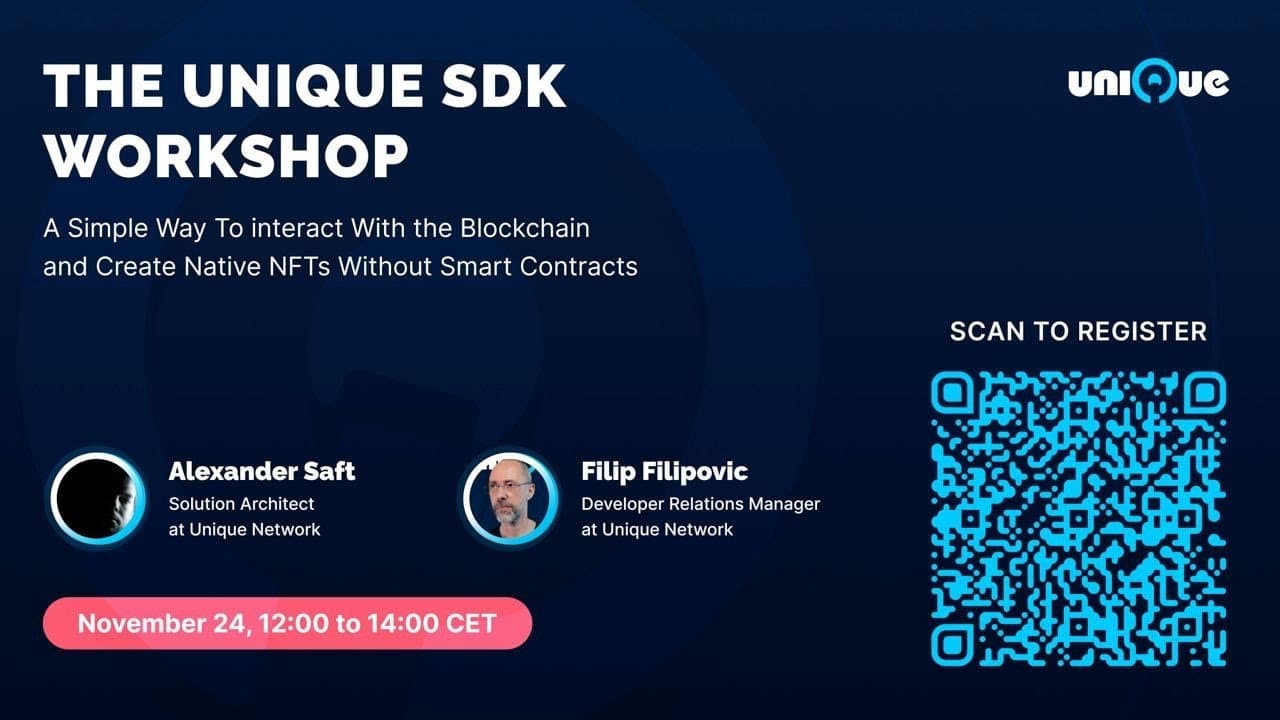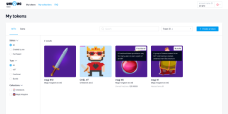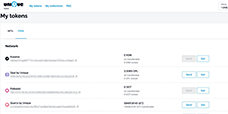Fast-minting NFTs have surged in popularity, riding the wave of our modern society's desire for instant gratification — Fast-minting NFTs are the new craze, and it’s time to explore the depths of what this technology beholds.
Highlights:
- NFTs have gained an immense amount of popularity since the distant years of the pandemic, but now, NFTs 2.0 are slowly creeping in and introducing more possibilities than ever.
- Critical assessment of why fast-minting NFTs are ever so needed in a world that we live in today.
- The tedious problems we face when it comes to mass-minting.
- Exploring the unique ways in which we can solve the issues we face when it comes to fast-minting.
- Key takeaways and what’s in store for the next generation of NFTs.
Keywords: Non-Fungible Tokens; NFT; Ethereum; Unique Network; Network; Chain; Blockchain…
Brief Introduction
Non-fungible tokens (NFTs) have risen in popularity for their unique take on digital items and how we bring real-world items into the virtual world, or as some like to call it, into the “Metaverse”. From the Kings of Leon turning to NFTs for their album, Paris Hilton creating her own unique digital art and Donald Trump releasing his own version of “Mugshot” NFTs, there’s no surprise that the demand is there. According to Blockchain News, whilst there was a slight decline in NFT volume for sales in 2023, NFTs are here to stay; reaching an incredible $8.70 billion in NFT sales in 2023 — indicating a growing participation in NFT trading.
When it comes to NFT collections, one in three NFT collections have expired, meaning little to no trading activity, blockchain analytics firm Nansen found. Additionally, Nanseen analyzed roughly ~8,400 collections comprised of 19.3 million individual NFTs on the Ethereum blockchain.
We’ve come far in terms of mass-minting NFTs. The first ever NFT sold was by Kevin McCoy who minted his Non-fungible token “Quantum” in 2014. Before, there were no platforms/services to initially create or mint your NFT — everything had to be done in code or using blockchain code that no one was familiar with.
Now, we’re seeing a new evolving pattern come to life. NFTs 2.0 continues to elevate engagement and true ownership of digital assets for users in the space.
Why is Fast Minting Important?
Minting NFTs has shown to be a fast, or equally extremely slow and tedious process, involving countless wallets, the platform in which you choose for the minting to take place, the network congestion, gas fees set aside for the transaction and more. All of this greatly depends on the amount you mint, the platform or “chain” you use and the network congestion at the time of minting.
Popular platforms like Ethereum may experience longer minting times due to their high demand and network activity. However, it’s important to note that with proper preparation and knowledge of the process, you can efficiently navigate these challenges and reduce the overall wait time for minting your NFT.
Before we knew NFTs would become a major thing, bulk NFTs or “Mass-Minting” was still relatively new. Nowadays, some platforms enable you to mint a large number of NFTs, however, before this was done manually using blockchain code. Tutorials such as “How to mint an NFT using Rest API” or “How to mint an NFT using GraphQL” were all too popular.
In summary, we need fast minting because:
- Blockchain is still ever-evolving, and at times, can still be extremely slow.
- Improves UX.
- Minting speed has proven that app developers can ramp up the production of NFTs quickly and cost-effectively to onboard millions of people onto Web3.
The Problems We Face: Fast Minting NFTs
When we think about NFT minting and the time it takes to mint an NFT, we automatically assume it will be a fast process, wherein nothing can go wrong - however, that is quite the opposite and there are several considerations to think about when it comes to the process of minting and general minting time.
Several elements include:
- Blockchain platform: Picking the right blockchain is crucial, as each platform may differ depending on what you’re looking for. Ethereum is considered the most popular blockchain for all NFT minting.
- Network congestion: Network congestion impacts everyone, and can either make or break your NFT minting. Sometimes, this can slow down your minting process and desync nonce, causing you to start all over again if not careful.
- Platform timeouts: Depending on the platform you use, (not blockchain) you may experience outages or timeouts. Be careful you know who to pick and ensure that they’re reliable and always up and working.
- Size and complexity of the NFT: The larger the NFT is, in addition to choosing a large .JPEG file or an .MP3 video file, means additional time for processing the NFT mint.
- Gas fees: Depending on the blockchain you have chosen, gas fees are the cost associated with each transaction or event you perform on the network. Using a smaller amount of gas fees will typically mean your NFT mints may not go through straight away.
- Tools & wallet connectivity: It’s crucial to be prepared and ensure you have the right tools on hand. Do you have a reliable wallet that you can use to mint your NFTs? Ensure that you have the right amount of tokens in your wallet to process all the transactions that you need to do.
- Platform-specific requirements: Remember, each platform you use, may have its own specific requirements (e.g. token requirements for minting). Always understand the factors that could affect minting timing.
The BAYC Mint Dilemma Hack
In 2022, Yuga Labs, creators of Bored Ape Yacht Club (BAYC), the popular NFT collection dominating the NFT charts, with over 9,900 NFTs minted, announced hackers had “briefly compromised” their Discord servers, later advising their community to not mint any NFTs.
BAYC enables users to mint ape-inspired Ethereum NFTs, featuring cartoon primates.
Drastic Gas Fees Spike with Land Sale NFT Mints
In March of 2022, Bored Ape Yacht Club (BAYC) released the highly-anticipated project, the Otherside NFT land sale. Raising around $285 million, causing unbelievably high transaction rates upon minting the NFTs — In the first 24 hours of the launch, transaction fees of the land sale amounted to more than $176 million — compared to on Unique Network, as an example, sees gas fees as minimal as ~$40 to mint ~4.9k NFTs in a given minute.
Do you think NFT mints should experience such drastic fees and unpleasant experiences of waiting times?
Network Outages — A Big Problem for Fast Minting NFTs
Solana stands out from the rest, with around 11 failings since their launch in 2022. Their latest outage at the time of writing, occurring on the 6th of February, 2024, sees Solana experiencing a 5-hour network outage — causing havoc and rift among NFT enthusiasts, communities and projects utilizing Solana as their primary platform for NFT minting.
Why is this a particular issue for NFT minting? When it comes to fast minting of NFTs, a network outage effectively means a complete halt — you are completely in the dark, incapable of performing any minting until a software patch is reviewed, approved and deployed onto a production environment.
Fast Minting NFTs: Our Take on the Right Solution
Optimizing for the fastest NFT minting should not be synonymous with exorbitant costs. Instead, reaching this milestone should be streamlined and accessible to everyone, emphasizing the importance of advancing NFT technologies through user-friendly experiences and efficient tools.
Unique Network has accomplished this by pushing the boundaries of what they think NFTs should be. This is where the idea of NFTs 2.0 comes in; empowering the next generation of Web3 developers to create something more than just a simple NFT art collection with advanced NFTs, such as customizable NFTs, nested NFTs, dynamic NFTs and many more.
Achieving the fastest NFT mint meant conducting 3 test stages, comparing the amount of NFTs that could be possibly minted per block/minute in a given transaction, in addition to averaging the total time to ensure as each stage went by, the opportunity of minting vast amount of NFTs were possible. This also comes all while utilising the least amount of gas spent (~$40).
Upon conducting this experiment of performing the fastest NFT mint, compared to other major chains on Ethereum such as Solana, a major difference was found — NFTs on the Unique Network are stored on-chain, whilst Solana’s (a major layer-1 solution) compressed NFTs (cNFTs) are stored off-chain. This ultimately makes Solana NFTs dependent on cloud storage providers and difficult to transfer and modify, proving to be major downsides to achieving this milestone and pushing NFTs to their next stage.
We now see a new result on Polkadot: 100,000 NFTs minted in 18 minutes and 42 seconds! Across 3 tested batches, we saw an incredible 5347.59 NFTs minted per minute!
Our forecasted results:

Key Takeaways and the Future of NFTs 2.0
As we venture into the next phase of NFT evolution, the possibilities seem not only boundless but hopeful and NFTs 2.0 promises a dynamic future, characterized by innovation and expanded opportunities. This exciting chapter is set to bring about enhanced functionalities, improved sustainability measures, and increased accessibility.
The road ahead is filled with promise, and the canvas of NFTs 2.0 awaits the brushstrokes of countless innovators, eager to contribute to a tapestry of creative potential.
References
- https://decrypt.co/216132/solana-outage-developers-say-could-happen-again
- https://blockworks.co/news/solana-downtime-post-mortem
- https://tech.hindustantimes.com/tech/news/crypto-bored-apes-warns-not-to-mint-nfts-after-chat-platform-hack-71648888061165.html
- https://unique.network/blog/forever-has-fallen-is-here-fastest-nft-mint-recorded-on-polkadot
- https://tech.hindustantimes.com/tech/news/nft-collection-failures-for-every-bored-ape-and-cryptopunk-there-is-a-baby-baller-71648369026209.html
- https://www.ccn.com/news/solana-outage-decentralization-software-bug-concerns
- https://101blockchains.com/otherside-land
- https://www.theguardian.com/music/2021/mar/04/kings-of-leon-to-release-new-album-as-a-non-fungible-token
- https://mocomuseum.com/info/paris-hiltons-obsession-with-nfts
- https://www.forbes.com/sites/tylerroush/2023/12/12/donald-trump-releases-mugshot-edition-digital-trading-cards-offers-pieces-of-suit-from-fulton-county-arrest/?sh=ca88b9676efe
All comments, thoughts and opinions are of the writer and solely of the writer and are not intended to sway anyone’s thoughts or feelings in this article.
Stay Up To Date
Follow Unique Network to get all the latest information, and join us to start your own unique, development journey:














 by
Unique Network
by
Unique Network